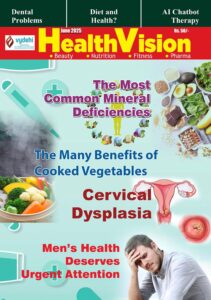4 Trends that are shaping the future of the pharmaceutical and healthcare supply chain in India, in the backdrop of the pandemic
While the Indian Pharmaceutical and Healthcare supply chain sector had been onthe path of steady growth, it remained largely fragmented and motivated by the traditional growth drivers like manufacturing and import/ export. The pandemic, however, has suddenly brought the sector under spotlight, with increased demand for life saving medicines, need for blood and plasma transfusion, surgical kits and temperature sensitive vaccines. Since March 2020, the Indian pharma and healthcare supply chain has been one of the most reliable pillar for the fight against the pandemic, and continues to play a significant role in combating the virus.
As per a report by JLL, the national cold chain sector is expected to grow at over 20% CAGR by 2025, and the Indian Pharmaceutical and healthcare supply chain remains a major growth driver. The pandemic has led to accelerated transformation of the sector and has opened up immense opportunity for expansion in not only Tier-I cities but also in Tier-II cities and towns.
Some of the key trends that are shaping the future of this sector, can be highlighted as under:


- Tech Adoption:This has been the cornerstone of change and disruption, transforming logistics and supply chains sector as a whole. From automation in warehousing for monitoring and maintaining cold storage facilities to driverless vehicles, and use of AI and ML enabled processes to ensure efficacy and speed, the Indian logistics sector has been rapidly adopting to change.
- Enhanced reach: Empowered by the policy push for infrastructure development in logistics, the Indian pharma and healthcare supply chain is further expanding its reach. Tech adoption, newer rail and road transport routes, setting up of dedicated logistic parks around ports etc., has given rise to the development of multi-modal logistics, and ensured that the vaccines and vital medicines are made accessible to the remotest corner of the country, in a shorter turn around time.
- Skilled and trained manpower: Tech adoption has put the need for training and up-skilling of handling staff and labourers, under spotlight. Given the significance of the cargo, especially sensitive medical material, like medicines, diagnostics kits and temperature sensitive vaccines, educating and training warehouse, transport and ground handling staff to handle the shipments with efficiency, has become vital. The training and up-skilling of labourers in Logistics and warehousing had been a largely ignored area so far. However, the pandemic has highlighted the urgent need and accelerated the process of adopting regular training for both, on ground and managerial staff, about effective handling of life-saving cargo, optimising tech enabled warehouse and supply chain operations and focusing on digital literacy for the blue collar staff.
- Policy push for FDI: The government decision of conferring infrastructure status to logistics has been one of the most important impetus for growth of the pharma and healthcare supply chain is the recent times.Apart from a lot of other benefits, this move has enabled the sector to be eligible for 100% foreign direct investment (FDI), especially in the storage and warehousing sector. This has been instrumental in allowing businessesto gain access to the much needed funds for accelerated tech adoption and expansion, at lower rates, and longer tenures. This is also enabling companies in the logistics and warehousing sector to access large sums under the external commercial borrowing (ECB), at a lower cost and longer tenure.
While all of the above factors are key drivers for growth of the sector, largely brought about due to the global pandemic, the renewed push for manufacturing and vocal for local initiatives are going further to ensure there is a continuous impetus for growth, in the post COVID era.


Aditya Vazirani
CEO – Robinsons Global Logistics Solutions











